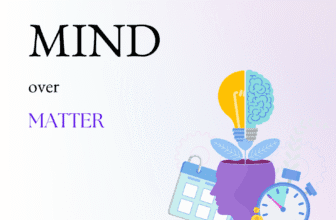Cognitive Hypnotic Psychotherapy (CHP) combines cognitive psychology principles with hypnosis to create a powerful therapeutic approach that facilitates deep, transformative changes. Integrating this technique into your practice can enhance your skills, making sessions more effective and beneficial for clients. This article will guide you through the fundamentals, benefits, integration techniques, session structure, case studies, and practical tips for seamlessly incorporating CHP into your practice.
Fundamentals of Cognitive Hypnotic Psychotherapy
Cognitive Hypnotic Psychotherapy is an integrative approach that combines elements of cognitive-behavioral therapy (CBT), neuro-linguistic programming (NLP), and hypnosis. This unique blend allows therapists to address both the conscious and subconscious levels of the mind, providing a holistic method for resolving various psychological issues.
Key Components of CHP:
- Cognitive Techniques: These involve identifying and challenging distorted thinking patterns to foster healthier thought processes.
- Hypnosis: Utilized to access the subconscious mind, allowing for deeper therapeutic interventions.
- NLP Techniques: Applied to modify behavior and thought patterns through language and sensory-based techniques.
Benefits of Cognitive Hypnotic Psychotherapy
Incorporating CHP into your practice offers several advantages:
- Effective and Efficient: CHP allows for quicker resolution of issues by addressing root causes at both conscious and subconscious levels.
- Versatility: This approach can be applied to a wide range of issues, including anxiety, depression, phobias, and trauma.
- Long-lasting Results: By restructuring core beliefs and thought patterns, CHP promotes enduring positive changes.
Integration Techniques
Integrating CHP into your practice requires a systematic approach. Here are the steps to follow:
- Education and Training: Begin by gaining a solid understanding of CHP through courses and certifications. This foundational knowledge is crucial for effective implementation.
- Initial Assessment: During the first session, conduct a thorough assessment to understand the client’s needs and issues. This will help tailor the CHP approach to their specific situation.
- Building Rapport: Establish a strong therapeutic relationship based on trust and empathy. This is essential for the success of any hypnotherapy-based technique.
- Setting Goals: Collaborate with the client to set clear, achievable goals. This provides a roadmap for the therapy process.
- Hypnotic Induction: Use hypnotic techniques to induce a state of relaxation and heightened suggestibility. This prepares the client for deeper therapeutic work.
- Therapeutic Interventions:** Employ cognitive and NLP techniques during the hypnotic state to address the client’s issues. This may include re-framing negative thoughts, resolving internal conflicts, and altering limiting beliefs.
- Reinforcement: Use post-hypnotic suggestions and follow-up sessions to reinforce positive changes and ensure long-lasting results.
Session Structure
A typical CHP session may be structured as follows:
- Introduction and Rapport Building (10 minutes): Begin with a brief conversation to establish comfort and trust.
- Assessment and Goal Setting (20 minutes): Discuss the client’s issues and collaboratively set therapeutic goals.
- Hypnotic Induction (10 minutes): Guide the client into a relaxed, focused state using induction techniques.
- Therapeutic Work (30 minutes): Implement cognitive and NLP techniques while the client is in a hypnotic state.
- Emerge and Review (10 minutes): Gently bring the client out of hypnosis and review the session’s progress.
- Closure and Homework (10 minutes): Provide the client with homework or exercises to reinforce the session’s work and set up the next appointment.
Case Studies
Case Study 1: Overcoming Anxiety
Client: Sarah, a 32-year-old professional experiencing chronic anxiety.
Approach: During the initial assessment, Sarah revealed her anxiety stemmed from past traumatic events. Using CHP, the therapist helped Sarah access and reframe these memories in a hypnotic state, reducing their emotional impact.
Outcome: Over several sessions, Sarah’s anxiety significantly decreased. She reported feeling more in control and less overwhelmed by her thoughts.
Case Study 2: Resolving Phobias
Client: John, a 28-year-old with a severe phobia of flying.
Approach: The therapist used CHP to address John’s fear at both the conscious and subconscious levels. Through hypnotic techniques, John visualized successful, calm flights, gradually desensitizing his fear.
Outcome: After a few sessions, John managed to take his first flight in years without experiencing panic, marking a major breakthrough in his therapy.
Practical Tips for Therapists
- Continuous Learning: Stay updated with the latest research and developments in CHP. Regularly attend workshops and training sessions.
- Supervision and Peer Support: Engage in supervision and peer support groups to discuss cases and gain insights.
- Client-Centered Approach: Always tailor your approach to the individual needs of the client. Flexibility is key to successful therapy.
- Ethical Considerations: Ensure that you maintain high ethical standards and obtain informed consent before using hypnotic techniques.
- Self-Care: Practicing CHP can be demanding. Regularly engage in self-care activities to maintain your well-being and effectiveness as a therapist.
Conclusion
Integrating Cognitive Hypnotic Psychotherapy into your practice can profoundly enhance your therapeutic capabilities. By addressing key challenges for both therapists and clients, this approach facilitates more effective and transformative sessions. The step-by-step guide provided here aims to resolve uncertainties, offering a clear framework for adoption. By exploring CHP fundamentals, benefits, integration techniques, session structures, and practical tips, therapists can significantly improve their practice, ultimately benefiting their clients with deeper, lasting changes.






